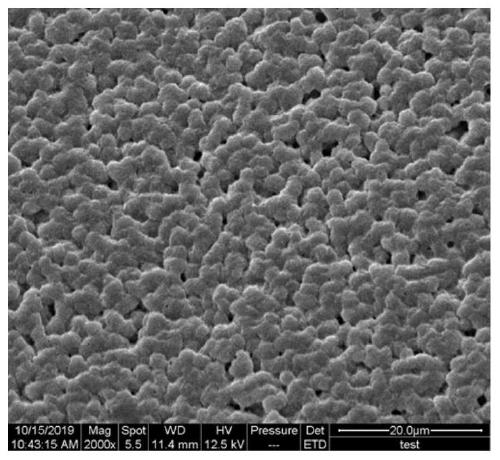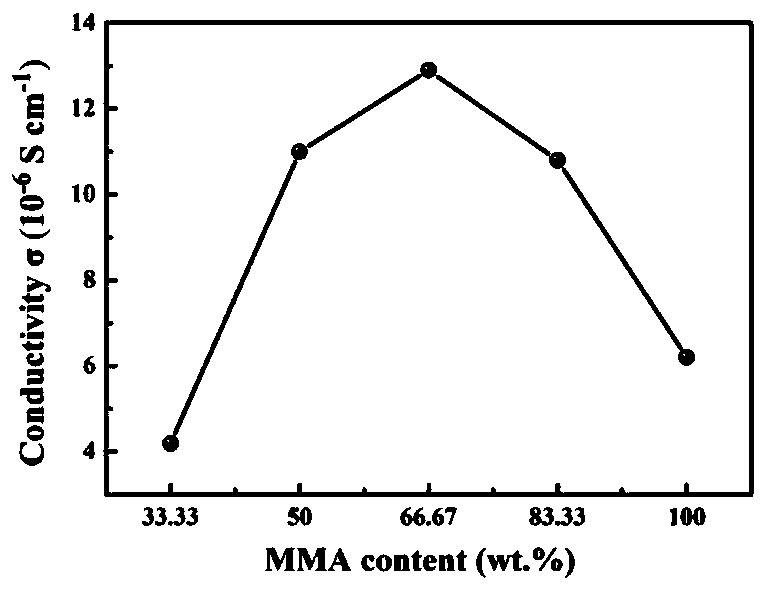Preparation method of polymer electrolyte taking cellulose as additive
A polymer and electrolyte technology, applied in the direction of electrolyte immobilization/gelation, circuits, electrical components, etc., can solve the problems of low conductivity of polyvinylidene fluoride, and achieve easy preparation, good electrochemical performance, and improved performance. Effect
- Summary
- Abstract
- Description
- Claims
- Application Information
AI Technical Summary
Problems solved by technology
Method used
Image
Examples
specific Embodiment 1
[0034] Specific Example 1: A method for preparing a polymer electrolyte with cellulose as an additive in this embodiment:
[0035] 1. Pre-treatment of materials
[0036] Pre-treat all materials except lithium salts and liquid materials to ensure that the materials are sufficiently dry before use.
[0037] 2. Preparation of cellulose solution
[0038] Dissolve a certain amount of polyvinylidene fluoride and hydroxypropyl methylcellulose in N,N dimethylformamide, heat in a water bath for a certain period of time to fully mix the two;
[0039] 3. Preparation of casting solution
[0040] Take a certain quality of polystyrene and dissolve it in toluene. After the polystyrene is completely dissolved, add the cellulose solution in step 2 and add a corresponding quality of diluent. After stirring for 12 hours, add lithium bistrifluoromethanesulfonimide, Continue to stir for 6h to make the solution evenly dispersed;
[0041] 4. Preparation of Polymer Electrolyte
[0042] Cast the ...
specific Embodiment approach 2
[0053] Specific embodiment 2: The difference between this embodiment and specific embodiment 1 is that the pretreatment method described in step 1 is drying at 80° C. for 3 hours in a blast drying oven. Others are the same as in the first embodiment.
specific Embodiment approach 3
[0054] Embodiment 3: This embodiment differs from Embodiment 1 or Embodiment 2 in that: the temperature of the water bath heating described in step 2 is 60° C., and the heating time is 30 minutes. Others are the same as in the first or second embodiment.
PUM
| Property | Measurement | Unit |
|---|---|---|
| Conductivity | aaaaa | aaaaa |
| Conductivity | aaaaa | aaaaa |
Abstract
Description
Claims
Application Information
 Login to View More
Login to View More - R&D
- Intellectual Property
- Life Sciences
- Materials
- Tech Scout
- Unparalleled Data Quality
- Higher Quality Content
- 60% Fewer Hallucinations
Browse by: Latest US Patents, China's latest patents, Technical Efficacy Thesaurus, Application Domain, Technology Topic, Popular Technical Reports.
© 2025 PatSnap. All rights reserved.Legal|Privacy policy|Modern Slavery Act Transparency Statement|Sitemap|About US| Contact US: help@patsnap.com



